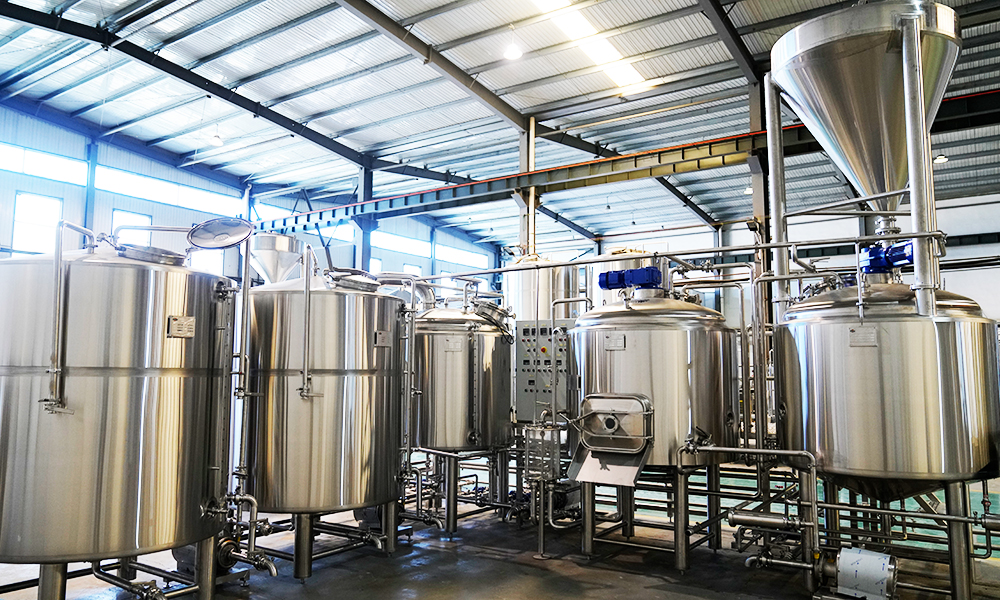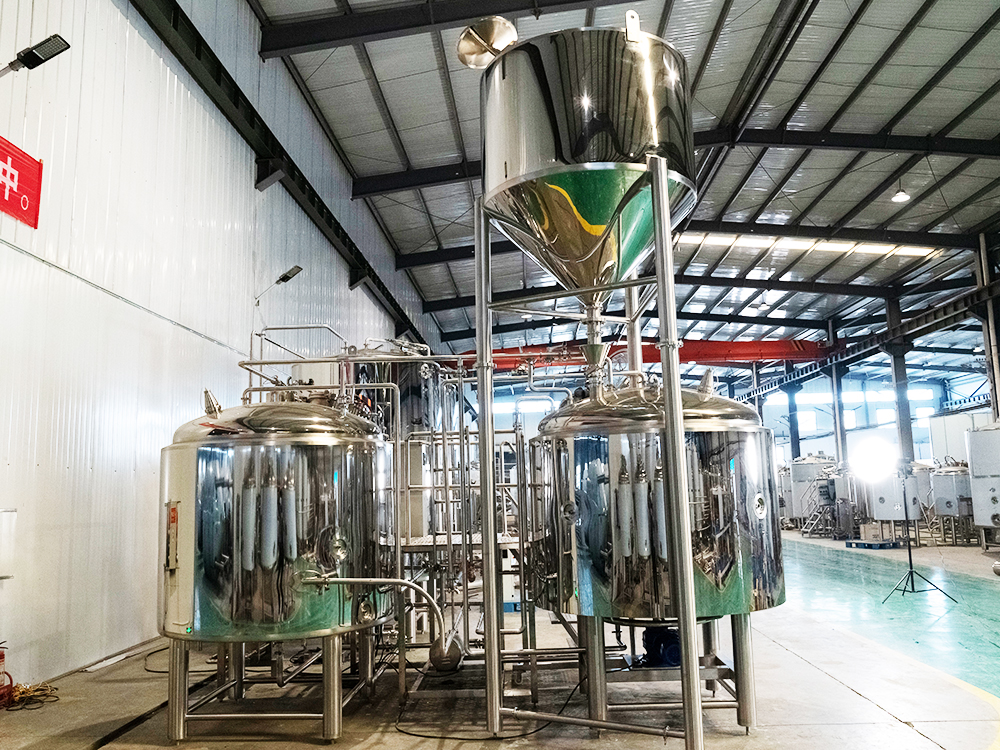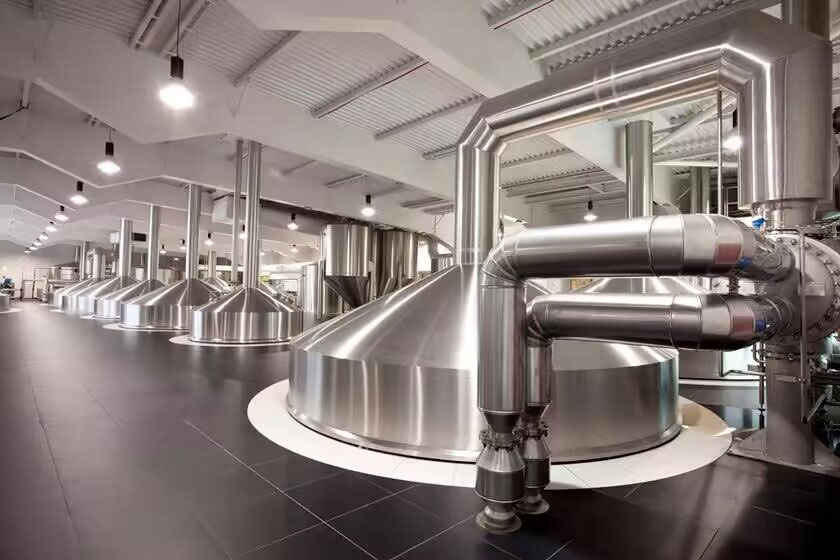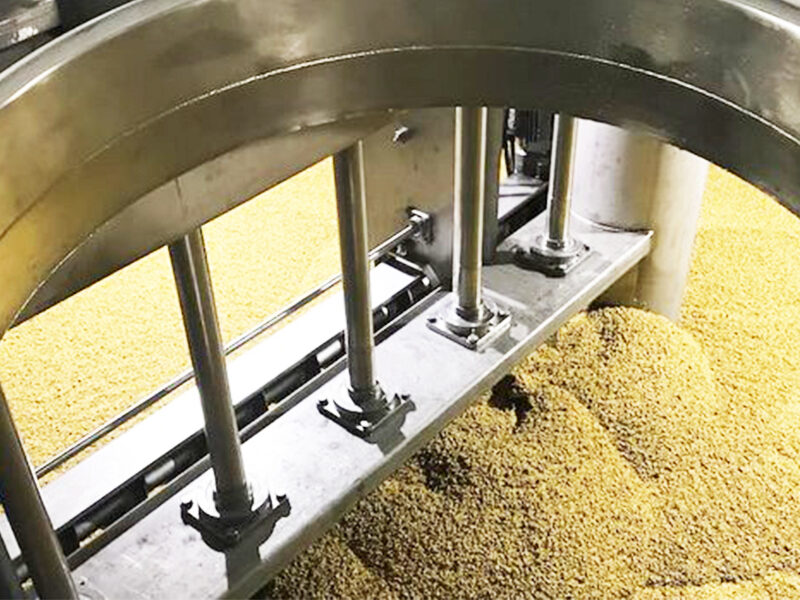Today, the Tiantai editor will talk to you about malt, one of the raw materials for beer brewing. What size of the brewery is suitable for the malt of different weights, and when storing raw materials, should we choose a flat warehouse or a silo? In addition, we will introduce the method of malt crushing in detail for your reference in the early preparation.
Malt: The starting point of beer flavor
First of all, we have to talk about basic malt, which is the main force in beer brewing, the most common type of malt in beer brewing, and the main source of sugar. Like Pilsner malt, the light color and low caramel degree keep the classic flavor of beer. In the production of beer, Pilsner occupies a dominant position. Barley malt is usually used to make dark beer or saccharify special malt because it has a higher sweetness and rich nutritional level, which can make beer more mellow, so some brewers will add barley malt to the beer recipe to enhance the nutritional value of beer. Wheat malt is a malt with a very light and soft taste. It makes beer fresh and delicious. Especially in German wheat beer, wheat malt is one of the essential raw materials. As for naked malt, it is a malt with a very light and soft taste. It is the key to brewing special beers such as white beer. There are also special malts, which can add various unique flavors and colors to beer so that each beer has its own story. Special malts are generally divided into high-roasted malt, caramel malt, roasted malt, other grain malts, and special process malts.

Storing malt: flat warehouse and silo
The storage and transportation supply of brewery malt can be in two forms: flat warehouse and vertical silo. Small-scale breweries often use flat warehouses, which are warehouses stacked in bags, suitable for small packages of 25 kg to 50 kg. The tons of bags or bulk raw materials required for large-scale brewing have to rely on silos, especially when a large amount of raw materials are needed. The silo can hold a lot of things, which can meet the storage needs of various types of malt and auxiliary materials in the brewery for 10 to 30 days. It can also automatically feed materials, saving time and effort. The materials used in the silo are also exquisite, rust-proof hot-dip galvanizing, strong plastic, or durable stainless steel to ensure that the malt is fresh and safe. The galvanized corrugated plate assembled steel silo with a conical bottom is divided into three parts: the silo top, the silo body, and the cone bottom; depending on the storage material, the cone bottom angle is usually designed to be 45º and 60º, which is suitable for the storage of raw materials with different fluidity; the cone bottom inlet and outlet are equipped with bucket elevators, which have a small footprint, vertical lifting, and high lifting capacity, and can realize automatic unloading of vehicles into the silo; the silo top and bottom are equipped with horizontal scraper conveyors, which can realize the feeding and discharging of different silos, and are automatically controlled without manual labor; the supporting tank top safety operation platform can meet daily inspection and maintenance.

Crushing method: wet method and dry method
When it comes to the methods and equipment used to crush malt, the process and selection are quite sophisticated. Wet crushing is suitable for brewing systems with large feed volumes and continuous production. It is to soak the malt after stone and iron removal in hot water at about 50℃ for 15~20min so that the moisture content of the malt reaches about 30%, and then enter the roller mill (the gap between the two rollers is 0.35~0.45m). While crushing, saccharification water (the material-water ratio is above 1:3) is sent to the crusher to mix the powder, and the powder is put into the saccharification pot while crushing; dry crushing is a traditional crushing method. The selected malt is sent to the screening machine through the conveying equipment to remove impurities and is weighed and metered into the temporary storage bin. By adjusting the raw material outflow gate, the malt directly enters the crusher for crushing. During crushing, the gate and roller spacing are adjusted according to the crushing capacity and crushing degree of the crusher. The crushed malt powder is stored in the malt powder bin. When dry grinding is used, the moisture content of malt is required to be between 6% and 8%. When the moisture content of malt is higher than 8%, it is not easy to grind into powder, but becomes flakes; when the moisture content of malt is lower than 6%, the bran is also easy to grind into powder, but it is not easy to form a good filter layer when filtering, causing filtering difficulties. Dry grinding equipment is simple and easy to operate, but it also has many disadvantages, mainly when the moisture content of malt changes greatly, and the grinding degree is difficult to control.
Summary
In short, every step from malt selection to storage and crushing directly affects the quality and flavor of beer. Different malts bring different characteristics, and scientific storage and appropriate crushing methods are also the key to ensuring the quality of beer.
The above is the beer equipment and beer brewing knowledge that Tiantai wants to share with you today. I hope it will be helpful for your brewing journey. If you are considering purchasing beer equipment, remember to contact us. Tiantai’s professional beer equipment will help your brewing journey smoother!



